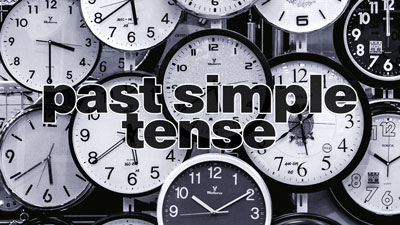We use the past simple tense to talk about states, actions, and events that took place in the past.
When we use the past simple, such states, actions, and events are detached from the present. They happened in the past, and they do not have a connection to the present. That is why we use this verb tense, for example, when we tell stories.

Kindel Media | Pexels
In this lesson, we will examine what ideas the past simple tense expresses.
The Time Frame of the Past Simple Tense
The past simple tense puts the state or action expressed by the verb completely in the past.
Think of an action such as walking. When you say, “I walked to the park this morning,” you are saying that the morning is over. The action of walking is over. It is completely in the past.
Uses of the Present Simple Tense
We use the past simple tense to express:
- states, actions, or events completed in the past,
- when telling stories,
- details about something in the past.
Expressing States, Actions, or Events Completed in the Past
The past simple tense is often used with words expressing the past such as yesterday, last night, in 2020, two years ago, when I was a child, and so on.
The past simple expressing states, actions, or events completed in the past
I saw Professor Ecks at the grocery store yesterday.
My parents got married when they were very young.
Scottish physician and microbiologist Alexander Fleming discovered penicillin.
The Smiths were driving home when the accident happened.
Note. Go over the above examples and notice that all the situations happened in the past and have no connection to the present. Everything started and ended in the past.
When Telling Stories
By nature, stories refer to states, actions, or events that happened in the past. That is why we generally use the past simple tense when we tell stories. It does not matter if the story is fictional or something that actually happened.
The past simple in stories
In the story below, notice how the narrator starts talking about the present (“You may not believe it but it is true”). Then the narrator switches to the past simple to tell the story. When the story is over, the narrator switches back to the present (“I still can’t believe it”).
You may not believe what happened the other day, but it is true.
A couple of friends and I were in the parking lot of a restaurant when a man drove up in an old car. He stopped right next to us, rolled down his window, and handed us an envelope. He said, “Merry Christmas. This is for you,” and drove away.
When we opened the envelope, we could not believe our eyes! There was $1,000 in it.
I still can’t believe it!
Expressing Details about Something that Happened in the Past
You can use the past simple to give details about a present situation by talking what happened in the past that led to the situation.
The past simple expressing details about what happened in the past
— Ouch! I’ve hurt myself! (present situation)
— What happened? (asking for details)
— I bit my tongue. (providing details about a past event that led to the present situation)
— You haven’t submitted the report. (present situation)
What happened? (asking for details in the past)
— My computer broke down, and I lost all my work. (giving details about past events that led to the present situation)
Verb Forms in the Past Simple Tense
Affirmative, interrogative, and negative forms of the past simple
I bought a new pair of glasses yesterday.
— Did you buy new shoes yesterday?
— No, I did not buy any shoes.
— What did you buy?
— I bought a new pair of glasses.
The company gave the employees a raise.
— Did the company give the employees a bonus?
— No, they didn’t. They gave them a raise.
— What did the company give the employees?
— They gave them a raise.
Practice
Complete this exercise to practice the past simple tense.
Related Lessons
See Using the present perfect tense.
List of irregular Verbs (C-Level) has the infinitive, past, and past participle forms of irregular verbs in English.
Congratulations on completing this lesson!
Snap Language supporters have made it possible for us to create this material.
Thank you!
Use the buttons below to choose another skill or lesson.